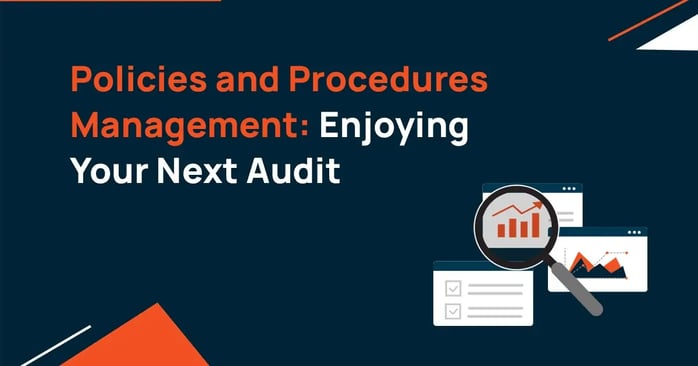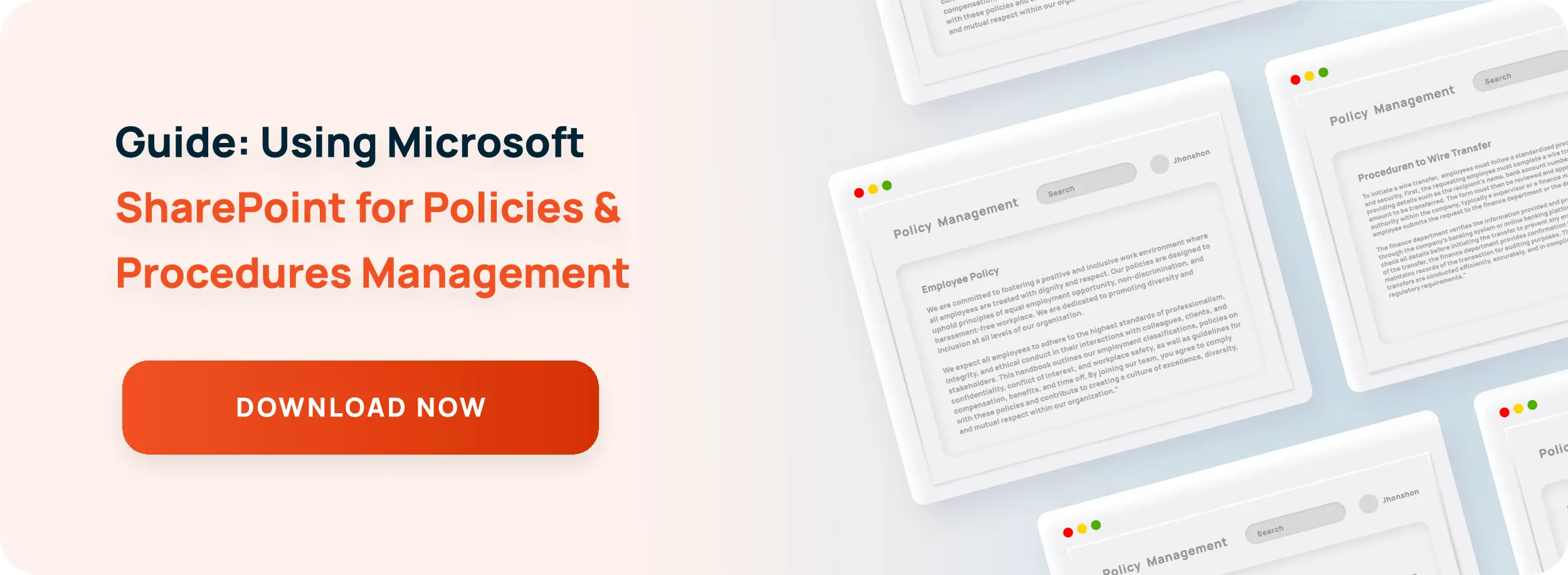Policies and Procedures Management – Enjoying Your Next Audit

If you were to look up the term ‘necessary evil’ in a dictionary, there should probably be a picture of an auditor included somewhere in the definition. Everyone can appreciate the valuable work that auditors do in keeping organizations in compliance, but nobody wants to see them show up in their department, especially if that arrival is unannounced. Surprise inspections or spot checks can serve a valuable purpose in ensuring that policy compliance is a standard operating procedure within the organization, rather than something that is brushed-up and polished in advance of scheduled audits, but they can also be a huge disruption in normal workflow, especially for organizations that have traditionally followed an ad hoc or fire fighting approach towards policies and procedures management.
Audit Pain
If your company has been struggling to hold on to compliance with a diverse mix of rough policies that were cobbled together with too little time and too few resources, an audit can be a painful and unwelcome look in the mirror. Assuming you can locate all of the requested materials, having to explain how those policies were created and implemented, in addition to explaining any subsequent gaps in training and policy revision updates, can be a painful experience. It’s often the prospect of this pain that drives so many companies into fire fighting mode to fix a bunch of problems that were long overdue to be addressed, either in advance of a notified audit, or within a short grace period before a return visit from an inspector who just happened to show up out of the blue.
Embrace the Audit
Thorough audits should expose the weaknesses in your compliance management system so that you can direct the resources needed to address them. As such, the prospect of an audit, no matter how unlikely such an event may be from your perspective, should be built into the compliance process. All of your policies and procedures should be created, reviewed, and revised when necessary with the full expectation that the complete lifecycle of each policy should be quickly and easily explained and demonstrated to an auditor. Careful management of the lifecycle with the right set of tools really can make an audit both a painless experience and an opportunity to demonstrate the skill and expertise of your team. The only person who might be a little unhappy is the auditor who will be left with nothing to critique on your audit report.
If you start, as Stephen Covey suggests, with the end in mind, a painless audit requires that every loose variable in your policy process get locked down. Our secure, access-controlled SharePoint portal ensures that policy creation, review, revision, approval and implementation are managed by authorized personnel who can be tracked in a real-time database. No more problems with version control, missed deadlines or ancient policies that never get updated. Central document storage ensures that all supporting documentation is easily accessible when needed, and Microsoft Active Directory ensures that all policy authors and contributors are recorded if the auditor has follow-up or clarification questions.
Monitor the Number of Reviews and Checks
Policy management processes tend to feature a large number of steps, reviews and inspections for relevant parties to take a look at. Although an organization wants their processes to be thorough, having unnecessary steps further slows down the process. Schedule reviews and checks as you see fit, but remember not to overdo them in fear of further complicating your policy management processes. Instead, try implementing reviews and checks at critical points in your processes, rather than scheduling them at every opportunity you get. You will save lots of time and only implicate the necessary parties.
Simplify and Shorten Your Processes
Communicating your policies and procedures across your entire organization is challenging considering the scope of all your employees. If your processes are too complicated to read, chances are your expectations are not coming across to your employees. Strive to keep your policies and procedures short and concise to ensure easy readability and to break up certain sections. Your employees will appreciate the fact they are able to fully understand your organizational policies and procedures, along with avoiding any miscommunication or confusion along the way.
Another method of streamlining and simplifying your policy management processes is through ConvergePoint’s Policy Management Software and Office 365 Add-In . Our solutions manage the full policies and procedures lifecycle of your organization and allow you to gain a firm grasp on the policy creation, distribution and acknowledgement phases. Additionally, our policy management solutions help your organization reach regulatory compliance while effectively communicating your expectations.
If you’re ready to make audit nightmares a thing of the past, let us show you how our comprehensive Policy Management Software solution can streamline your policy processes. Schedule your no obligation demo now.
Related Articles:

